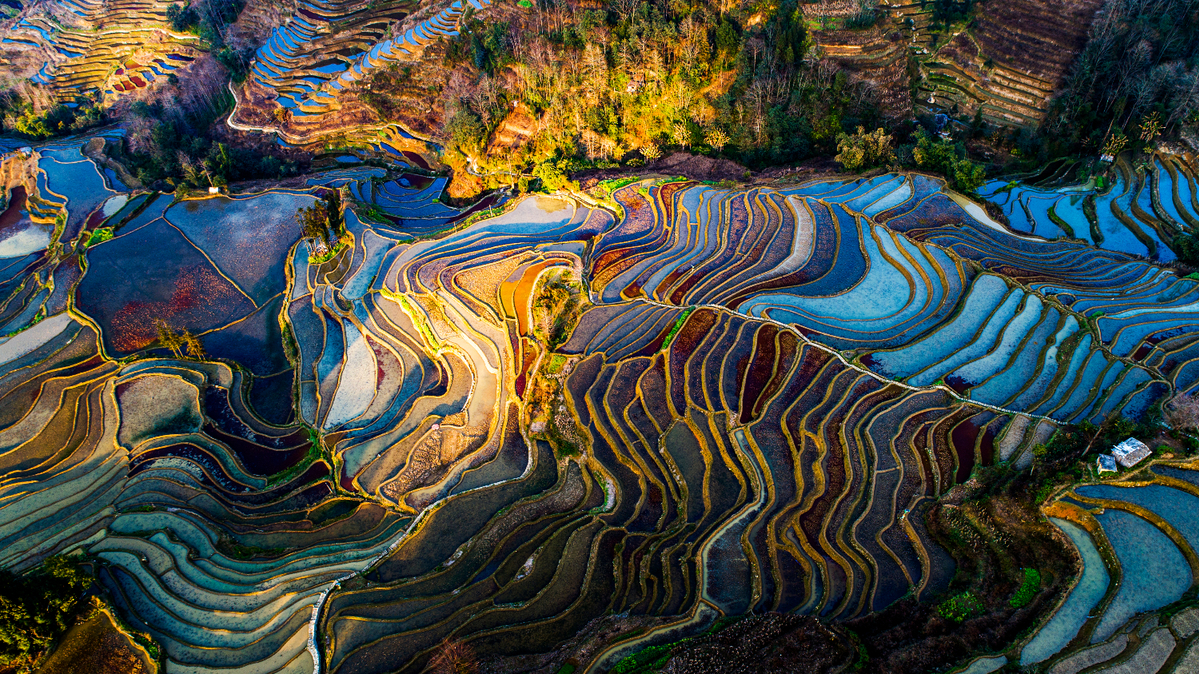Hope springs from ancient terraced paddies

Terraced rice paddies in Yuanyang, Yunnan province, are considered a man-made wonder. (Photo by Xie Peixia/for China Daily)
For over 1,300 years, the Hani people in Southwest China have plowed rice terraces that appear to cascade down the lush hillsides and form a spectacular view. The terraced fields in Yuanyang county, Yunnan province, made it onto the UNESCO World Heritage list in 2013.
The agricultural wonder was created by the Hani, an ethnic group that mostly inhabits an area near the Ailao Mountains.
The Hani built a series of channels to direct water from the forested hilltop to nurture paddies on the mountain slopes. Tourists flock to view the vista every winter, when the clear sky is reflected in the flooded fields.
In late 2008, the Yunnan Expo Yuanyang Hani Terraced Fields Culture Tourism Development, was established, and with an initial capital injection of 12 million yuan ($1.9 million) hotels and infrastructure were built to cater to tourists.
However, the Hani are facing a major challenge-fewer of their people, especially the younger ones, have mastered the techniques to farm the terraced fields.
Agricultural machinery is not much use due to the restrictions of the tiered landscape. The paddies need year-round planting procedures to grow the local red rice, a single-season variety that grows at high altitude. "In our village, about 600 people are between 20 and 40, roughly one-fifth of the total population, but only 40 of them know the whole procedure of growing red rice," said Ma Youkai, chief of Aichun village.
To prevent the land from being abandoned, those who have remained in the village still help till it. The local government and tourist companies also work with farmers, who lease their land to cooperatives or companies. As a result the land is managed in an orderly way, and villagers get stable incomes from both the rentals and the farm work.
Villagers are also open to other ways to earn money, such as breeding ducks and fish in the paddies. Using this method increases the output per hectare from less than 30,000 yuan to 120,000 yuan.
Another difficulty Yuanyang has had to overcome is preserving its traditional housing. A Hani house usually consists of mud, wood, and other natural materials. It is two or three stories high and with a straw roof as its main feature, it is called a "mushroom house".
As only one of two well-preserved examples of the architectural style in the world, Azheke is home to about 480 villagers who inhabit 61 traditional houses.
In 2018, the local government cooperated with Sun Yat-sen University to develop tourism in the village to attract migrant workers back home. A tourism company was established, and the villagers received 70 percent of its shares.
Now tourists pay to enter the well-maintained village. Residents work as tourist guides and ticket sellers, introducing visitors to Hani traditions and helping them experience farm work.
Seeing the opportunities, some migrant workers chose to return to Azheke. "The most effective way to protect the old houses is to let people live inside," said Wang Ranxuan, the village chief.
Wang added that residents need to replace the worn-out straw roofs every three or five years, which cost 20,000 to 30,000 yuan every time, a large sum of money for a family.
But now, all these expenses are covered by the company and the government. In 2018, more than 20 million yuan went into renovating the houses in Azheke and preservation work on the houses is continuing.